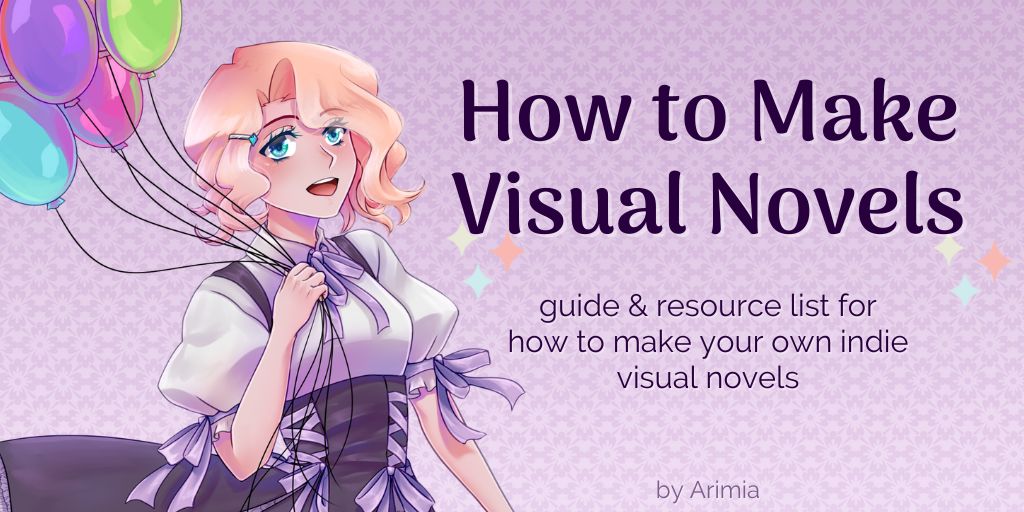Visual novels have taken the gaming world by storm, captivating players with immersive storytelling and stunning visuals. These interactive experiences allow you to step into a narrative like never before. If you’ve ever dreamed of creating your visual novel, you’re in for an exciting journey.
Imagine crafting characters that resonate deeply or weaving intricate plots filled with unexpected twists. The possibilities are endless. From choosing the right art style to mastering dialogue, each element plays a crucial role in bringing your vision to life. Whether you’re inspired by titles like “Cinders” or want to carve out your unique niche, this guide will help you discover the secrets behind engaging visual novels. Let’s dive into the essential components that will transform your ideas into a captivating reality.
What is a Visual Novel?
A visual novel is an interactive storytelling medium that combines text, artwork, and sound to create a unique narrative experience. Unlike traditional books or films, players actively engage with the story by making choices that can alter its direction.
Typically featuring stunning character designs and detailed backgrounds, visual novels draw players into their worlds through captivating visuals. Each scene unfolds like a page in a book while vibrant images enhance the emotional impact of the storyline.
Game mechanics often include branching paths. This allows for multiple endings based on player decisions. The depth of choice adds layers to the gameplay, encouraging exploration and replayability.
Visual novels range from romantic tales to thrilling mysteries. Their versatility appeals to diverse audiences looking for immersive experiences beyond simple reading or watching.
The Importance of Storytelling in Visual Novels
Storytelling is the heart of any visual novel. It draws players into immersive worlds filled with rich narratives and emotional depth. A compelling story keeps them engaged, prompting them to explore every twist and turn.
In visual novels, the narrative unfolds through choices that shape the player’s journey. This interactivity enhances their connection to characters and events, making each decision feel impactful.
Well-crafted plots create tension and intrigue, keeping readers eager for what’s next. Characters should resonate on a personal level, allowing players to see themselves in their struggles or triumphs.
Moreover, storytelling allows for themes to emerge—love, betrayal, hope—that linger long after gameplay ends. By weaving together engaging narratives with relatable character arcs, creators can leave a lasting impression on their audience.
Choosing the Right Art Style for Your Visual Novel
Art style plays a crucial role in defining the atmosphere of your visual novel. It’s not just about aesthetics, it influences player engagement and emotional connection.
Consider the theme of your story first. Are you crafting a whimsical adventure or a dark mystery? Each genre has art styles that resonate more strongly with players.
Think about your target audience as well. Vibrant, cartoonish designs may appeal to younger gamers, while detailed, realistic artwork could attract an older crowd.
Experimentation can lead to discovery too. Don’t hesitate to sketch different concepts before settling on one approach. You might find inspiration from various sources, like anime or classic paintings.
Remember, consistency is key, Ensure that characters and backgrounds complement each other for a cohesive experience that immerses players fully into your world.
Writing Engaging Characters and Dialogue
Creating engaging characters is at the heart of a compelling visual novel. Start by giving them distinct personalities, backgrounds, and motivations. Readers should feel connected to your characters as if they know them personally.
Dialogue plays a crucial role in character development. It should reflect each character’s voice and personality traits. Avoid generic lines, instead, craft unique expressions that resonate with their experiences.
Consider using subtext in conversations. Characters often have unspoken feelings or hidden agendas that can make dialogue more dynamic and interesting.
Don’t forget about interactions between characters. Relationships evolve through exchanges—whether they’re friendly banter or heated arguments. These moments reveal deeper layers of personality and drive the narrative forward.
Remember to keep it natural. Characters shouldn’t always speak in perfect sentences, real-life conversations are filled with imperfections and interruptions, adding authenticity to your writing.
Incorporating Choices and Branching Paths in Your Visual Novel
Choices are the heartbeat of a visual novel. They invite players to steer the narrative in their desired direction. This dynamic element keeps engagement high, as readers feel empowered by their decisions.
Branching paths add depth and complexity. Each choice should lead to unique outcomes, whether they result in different story arcs or varied character developments. It’s essential that these branches feel meaningful and not just like surface-level options.
Consider utilizing a flowchart during the planning phase. Visualizing how choices affect the storyline can help maintain coherence while allowing for rich storytelling possibilities.
Remember, pacing is crucial when integrating choices. Too many options at once can overwhelm players, instead, introduce them gradually to ensure clarity and enhance immersion throughout your tale.
Tips for Creating Memorable Endings
Crafting a memorable ending is crucial in leaving a lasting impression on players. It’s the final note in your symphony of storytelling, and it should resonate.
One effective method is to tie back to earlier choices made by the player. This creates a sense of closure and reinforces the impact of their decisions throughout the game.
Consider introducing unexpected twists that align with character arcs. These surprises can elevate emotional stakes, making endings feel more rewarding or heart-wrenching.
Also, don’t shy away from ambiguity. Sometimes, leaving certain elements unresolved can provoke thought and discussion among players long after they finish your visual novel.
Encourage reflection by including an epilogue or an aftermath scene. This provides insight into how characters evolve due to their experiences within the story you’ve crafted.
Utilizing Sound and Music in Your Visual Novel
Sound and music play a pivotal role in shaping the mood of your visual novel. They create an emotional backdrop that enhances storytelling. The right soundtrack can evoke feelings of joy, sadness, or tension, immersing players in the narrative.
Consider using ambient sounds to set scenes. Gentle rain or distant chatter can ground players in the story’s world. These subtle details enrich the experience without overwhelming it.
When selecting music, think about character themes. Unique motifs for each character help reinforce their personalities and arcs. This connection deepens player engagement as they navigate complex choices.
Don’t overlook sound effects either, they add realism to actions within your game. A door creaking open or footsteps approaching can heighten suspense dramatically.
Experiment with layering different audio elements to create a dynamic soundscape that evolves alongside your story’s progression. This approach will keep players captivated from start to finish.
Marketing and Releasing Your Visual Novel
Marketing your visual novel is crucial for success. Start by identifying your target audience. Tailor your message to connect with them effectively.
Social media platforms are invaluable tools. Use Twitter, Instagram, and TikTok to showcase art and snippets of the story. Engage with potential players through polls or Q&A sessions about character development or plot twists.
Consider creating a demo version of your visual novel. This allows players to experience a taste before committing fully. Gather feedback during this stage, can provide insights into what resonates most.
Building an online community should also be a priority. Platforms like Discord foster connection among fans and developers alike, encouraging discussions around themes and characters.
Don’t overlook collaborations with influencers in the gaming community. They can amplify visibility and reach new audiences eager for engaging content like Cinder Visual Novel. You can also read these: The Ultimate Guide to Buying a UZombie
Conclusion
Creating an engaging visual novel is a multifaceted endeavor that combines storytelling, art, and interactivity. Each element plays a crucial role in drawing players into your world. A strong narrative keeps them invested, while characters they can connect with add depth to the experience.
Choosing an appropriate art style enhances the mood you want to convey. Whether you opt for vibrant anime visuals or darker tones, consistency in design is key.
Adding choices and branching paths makes your story dynamic. Players enjoy having control over their journey and discovering multiple endings based on their decisions.
Sound and music are often overlooked but can significantly enhance immersion. The right soundtrack sets the tone and evokes emotions at pivotal moments.
Marketing your visual novel effectively ensures it reaches its audience. Utilize social media platforms, forums, and gaming communities to generate interest before launch.
With these strategies in mind, you’re well-equipped to create a captivating visual novel that resonates with players—much like “Cinders,” which has set benchmarks for storytelling excellence in the genre. Embrace creativity as you embark on this exciting project.



